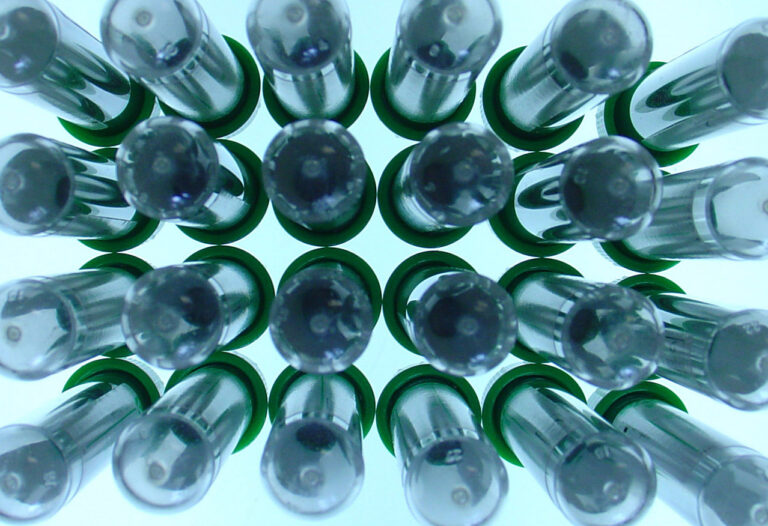Chemical and Biological Weapons in Terrorism

Some terrorist attacks in Indonesia has shifted from the use of conventional bombs made from ammonium nitrate fuel oil or ANFO to radioactive biological chemical weapons and nuclear weapons which on a large scale have the potential to become weapons of mass destruction. From the Journal of Terrorism Studies compiled by Yohanes Genius Putu Sanjaya, Arthur Josias Simon Runturambi, and Sidratahta Mukhtar the use of radioactive biological chemical weapons has occurred since June 2011 with an event known as Santhanam Poison Kemayoran.
In this incident, 6 members of a terrorist group who were still part of Jemaah Islamiyah under the coordination of Santhanam alias Santa alias BW alias WOI alias Goban carried out an attack at the Kemayoran Police Sector Headquarters, Central Jakarta. They smuggled poison made from forest jatropha seeds in the form of 250 ml of a reddish yellow liquid which was identified as cyanide but later it was discovered that the liquid was ricin poison and arsenic residue into the Kemayoran Police canteen to be mixed with food which was later served to the police. Fortunately the attack failed.
Six people including Santhanam were arrested by the Special Anti-Terror Detachment (Densus 88) in different locations. They were arrested due to the confession of members of the Poso group who shot the police by saying that they would spread cyanide poison in the police canteens and police dormitories. Santhanam and his partners in crime were charged with Law No. 5 of 2018 with multiple articles.
After that, in 2012 there was a bomb that was planned to be detonated in the city of Solo, Central Java, which used nitroglycerin with an analog clock as a delay trigger and a decorative light bulb as the initiator. The impact that arises with the use of this substance is the occurrence of shock, heat, changes in atmospheric pressure and friction.
In the journal entitled “Strategies for Preventing Terrorist Attacks in Indonesia Using Weapons Mass Destruction (WMD) by the Police, BNPT, Bapeten, TNI, BNPB and the Ministry of Industry, Detachment 88’s data on the use of chemical, biological, radioactive and nuclear weapons are presented. In the period 2011-2019, six terror attacks were recorded using chemical, biological, radioactive and nuclear weapons.
In addition to the delivery of poison at the Kemayoran Sector Police Headquarters and also the bomb in Solo City initiated by Badri Hartono of the JAD group, there are still 4 cases of terror attacks involving the use of Weapons Mass Destruction. Among them, the attack at ITC Depok using chlorine gas and black powder in 2015. Then in 2017 radioactive substances were found in the bombs assembled for the planned attack in Bandung using Thorium as well as explosives in the form of 12 kg of TATP in wet conditions.
Furthermore, the planned terror attack by Endang from the JAD group network in Bogor in 2019 used Nitroglycerin, TATP, a mixture of Acetone, Hydrogen Peroxide and HCL. Lastly, the planned bomb attack in Cirebon used a poison bomb containing Abrin with a concentration of 310 grams which also found other ingredients, namely Methanol, Urea and 5 liters of Nitric Acid.
Wartoyo, a former terrorism convict who was a perpetrator of Santhanam Poison Kemayoran who was also arrested with Santhanam and is now free, said that one of the reasons his group used castor beans was because it was very difficult and almost impossible to obtain cyanide.
“Cyanide was a very rare item at that time and not just anyone could get it, even if they could, it wasn’t just anyone,” said Wartoyo.
Wartoyo said that the decision to use jatropha seeds was taken after his leader, Santhanam, did a search on the internet about ingredients that could be used as poison. Until later it was found that castor seeds contain compounds that have an effect such as poison.
As for the reason why they chose to use poison instead of explosive weapons, Wartoyo said that from the start they realized that the group was only a small group and did not have the ability to take action using explosive devices such as grenades or bombs and thought of a simple method but with great impact. big and deadly.
Terrorism observer from Al Malikussaleh University, Al Chaidar sees that the use of chemical, biological and radioactive weapons in Indonesia will not become a trend, at least in the near future. In the case of Nitroglycerin in Solo, he said that it was just a coincidence because someone provided the materials, not because they had been able to make them or had access to them. Even though those who use it are from the JAD group, it cannot be said that it is a characteristic of JAD because not all JAD use it.
“They still use conventional weapons, such as homemade weapons. The use of chemicals and biologics is still limited to trial and error and has not succeeded,” said Al Chaidar.
According to Al Chaidar, weapons made from chemical and biological materials are still very difficult to obtain in Indonesia. Meanwhile, to make your own is also not easy. Gaining access to connect with suppliers also requires a high level of discipline. So, even though there are attacks using chemical and biological substances in Indonesia, the numbers are still very small and not massive.



